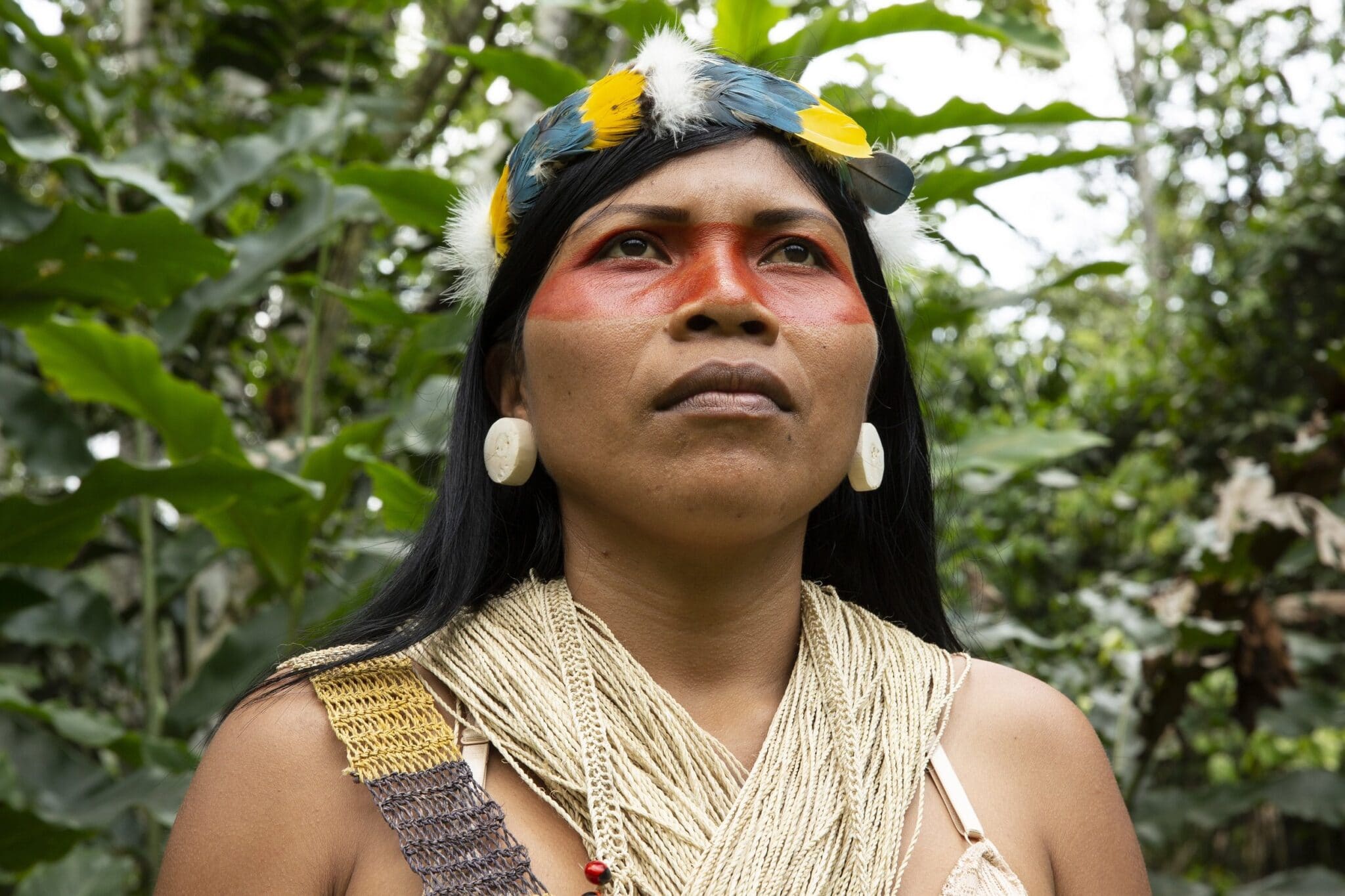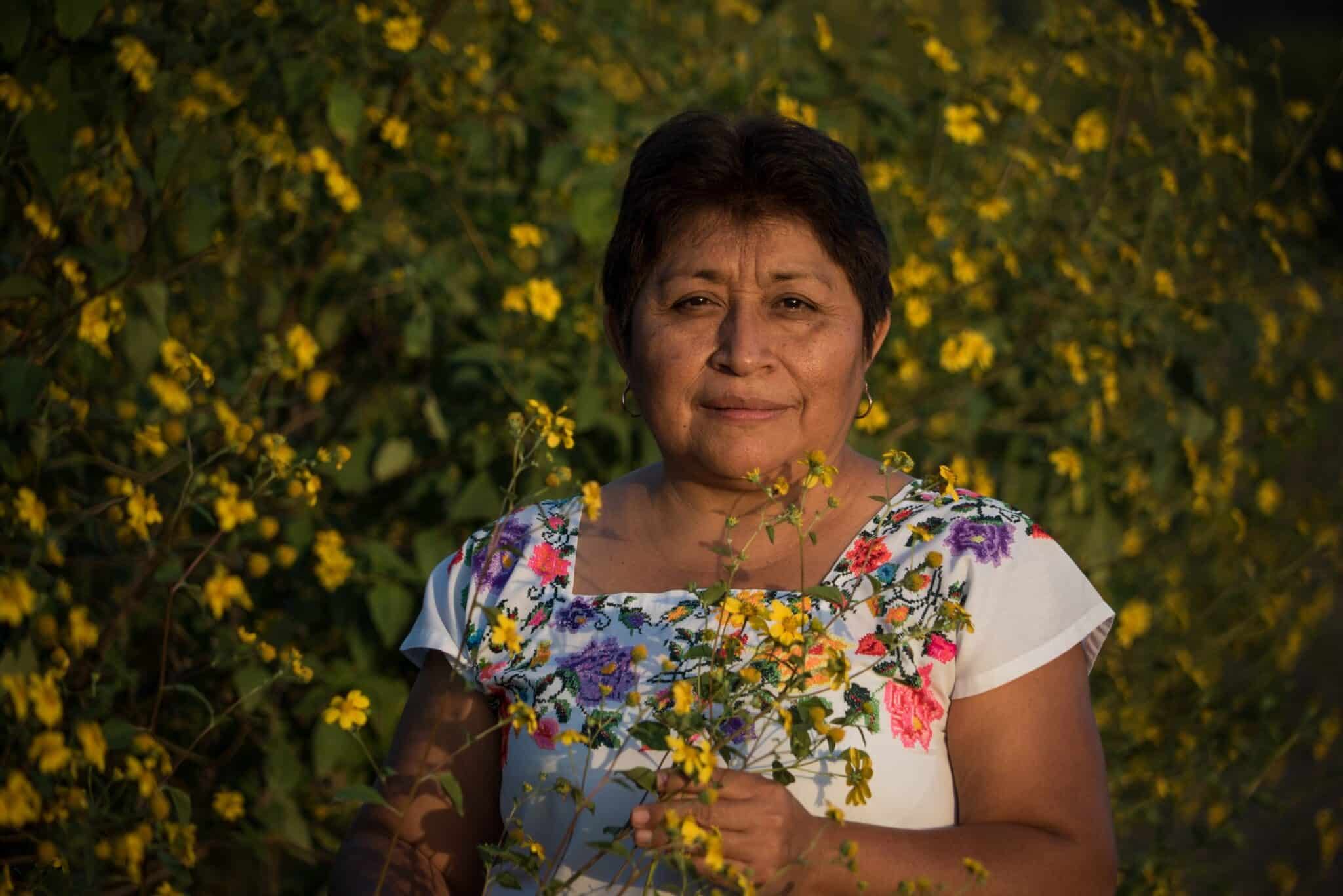

By Liz Kimbrough
Six grassroots environmental activists will receive the prestigious Goldman Environmental Prize in a virtual ceremony this year. Dubbed the “Green Nobel Prize,” this award is given annually to environmental heroes from each of the world’s six inhabited continents.
This year’s winners include an Indigenous Mayan beekeeper who led a coalition to ban genetically modified soy in seven Mexican states, a French activist who pressured France’s three largest banks to stop financing coal, a woman who harnessed youth activism to enact a ban on single-use plastics in the Bahamas, an Indigenous Waorani woman who organized legal action preventing oil extraction in a huge expanse of Amazon rainforest, an Indigenous Karen organizer who spearheaded the formation of the world’s first peace park in an active conflict zone, and an activist who prevented the construction of what would have been the first coal-fired power plant in Ghana.
“These six environmental champions reflect the powerful impact that one person can have on many,” John Goldman, president of the Goldman Environmental Foundation, said in a statement. “Even in the face of the unending onslaught and destruction upon our natural world, there are countless individuals and communities fighting every day to protect our planet. These are six of those environmental heroes, and they deserve the honor and recognition the Prize offers them — for taking a stand, risking their lives and livelihoods, and inspiring us with real, lasting environmental progress.”
The prize ceremony, typically held in April each year was postponed due to the COVID-19 pandemic. This year’s ceremony will take place virtually today, Nov. 30, at 4 p.m. PST and will be hosted by Sigourney Weaver, with musical appearances by Jack Johnson, Michael Franti, Danni Washington and Lenny Kravitz.
Here are the winners of the 2020 Goldman Environmental Prize:
Kristal Ambrose, the Bahamas

Kristal Ambrose. Goldman Environmental Prize
Kristal Ambrose started a youth movement that convinced the government of the Bahamas to enact a ban on single-use plastic bags, plastic cutlery, straws, and Styrofoam cups and containers.
Millions of tourists travel to the Bahamas each year to see the islands’ famed beaches and diverse marine life. However, plastic waste has increasingly polluted beaches and coral reefs, harming marine life and the economy. Worldwide, at least 8 million tons of plastic end up in the ocean each year. By some estimates, more than half of all plastic produced are for single-use purposes.
Ambrose, a 29-year-old Bahamian woman, says she once witnessed the removal of plastic lodged internally in a sea turtle and, according to a statement, vowed, “I’ll never drop a piece of plastic on the ground again.” She went on to join an expedition to study the western garbage patch in the Pacific and, upon returning home, founded the Bahamas Plastic Movement in 2013. The goal: develop solutions and educate the youth. Ambrose created a free camp to train youth leaders and researchers who spent their days surveying beaches for plastic, measuring microplastics from boats, and dissecting fish to find plastic within.
Ambrose drafted legislation to ban single-use plastics on the islands and organized outreach and advocacy campaigns around the issue. In January 2018, Ambrose and students from her camp met with the environment minister to discuss the economic and environmental impacts of plastic waste. Three months later, the environment minister officially announced a ban on single-use plastic bags, straws, food utensils, and Styrofoam cups and containers. The ban was enacted in January this year.
Chibeze Ezekiel, Ghana

Chibeze Ezekiel. Goldman Environmental Prize
Chibeze Ezekiel led a four-year grassroots campaign to cancel the construction of the first coal-fired power plant in Ghana, changing the trajectory of Ghana’s energy future.
Ghana has faced energy shortages and blackouts. Increasing droughts have made hydroelectric projects less reliable. Searching for solutions, the government of Ghana proposed the construction of a 700-megawatt coal-fired power plant and an industry-ready shipping port in Ekumfi district, a coastal fishing community where fresh water resources are limited.
Knowing that wastewater and mercury emissions from the coal plant could threaten the health and safety of the districts, Chibeze “Chi” Ezekiel, 40, got to work. As national coordinator of 350 Ghana Reducing Our Carbon and an experienced youth organizer, he launched an awareness campaign around the dangers of coal plants. When the coal company pitched the plant to local communities and community leaders, the latter were prepared to ask tough questions and provide contrary evidence to their claims.
In 2016, Ghana’s environment minister announced the coal plant would not move forward, and in 2017 the country’s president said all new power projects would be renewable energy-based. Ghana has now released a Renewable Energy Master Plan, signaling its commitment to a renewable energy future. Ezekiel’s work prevented the coal industry from gaining access to Ghana, and he now works toward a cleaner energy future for the country.
Nemonte Nenquimo, Ecuador

Nemonte Nenquimo. Goldman Environmental Prize
Nemonte Nenquimo filed a lawsuit against the Ecuadoran government and successfully safeguarded 202,000 hectares of Indigenous territories and Amazon rainforest from oil exploration and extraction.
Nenquimo, 33, is an Indigenous Waorani woman from the Amazon Rainforest in Ecuador. In 2015, she co-founded an Indigenous-led coalition called the Ceibo Alliance and was elected president of an organization that represents the Waorani of Ecuador’s Pastaza province.
Ecuador is among the most biodiverse places in the world, but its forests and people have been increasingly threatened by logging, road construction, oil exploration and other extractive industries. In 2018, in an effort to bring oil company investments into the nation, Ecuador’s minister of hydrocarbons announced 2.8 million hectares (7 million acres) of land constituting primary rainforest would be auctioned off for oil concessions.
In 2019, Nenquimo and other Waorani leaders filed a lawsuit against three government ministries in Ecuador for falsely claiming they had consent from the Waorani to sell their lands at auction. She also bolstered Indigenous community independence by installing solar and rainwater catchment systems in villages and supporting cottage industries such as chocolate production. Nenquimo helped secure funds for Indigenous filmmakers to tell their stories and played a lead role in a community mapping project charting the Waoroni territory around 16 communities.
In April 2019, Nenquimo and the Waorani won the court case against the Ecuadoran ministries, and the ruling was upheld in the court of appeals, safeguarding 202,000 hectares of Indigenous territories and Amazon rainforest from oil exploration and extraction. This case set an important legal precedent for Indigenous rights in Ecuador.
Nenquimo was named one of TIME magazine’s list of 100 most influential people of 2020, and continues to work as a leader of her people and the environmental movement in Ecuador.
Nemonte Nenquimo filed a lawsuit against the Ecuadoran government and successfully safeguarded 202,000 hectares of Indigenous territories and Amazon rainforest from oil exploration and extraction.
Nenquimo, 33, is an Indigenous Waorani woman from the Amazon Rainforest in Ecuador. In 2015, she co-founded an Indigenous-led coalition called the Ceibo Alliance and was elected president of an organization that represents the Waorani of Ecuador’s Pastaza province.
Ecuador is among the most biodiverse places in the world, but its forests and people have been increasingly threatened by logging, road construction, oil exploration and other extractive industries. In 2018, in an effort to bring oil company investments into the nation, Ecuador’s minister of hydrocarbons announced 2.8 million hectares (7 million acres) of land constituting primary rainforest would be auctioned off for oil concessions.
In 2019, Nenquimo and other Waorani leaders filed a lawsuit against three government ministries in Ecuador for falsely claiming they had consent from the Waorani to sell their lands at auction. She also bolstered Indigenous community independence by installing solar and rainwater catchment systems in villages and supporting cottage industries such as chocolate production. Nenquimo helped secure funds for Indigenous filmmakers to tell their stories and played a lead role in a community mapping project charting the Waoroni territory around 16 communities.
In April 2019, Nenquimo and the Waorani won the court case against the Ecuadoran ministries, and the ruling was upheld in the court of appeals, safeguarding 202,000 hectares of Indigenous territories and Amazon rainforest from oil exploration and extraction. This case set an important legal precedent for Indigenous rights in Ecuador.
Nenquimo was named one of Time magazine’s list of 100 most influential people of 2020, and continues to work as a leader of her people and the environmental movement in Ecuador.
Leydy Pech, Mexico

Leydy Pech. Goldman Environmental Prize
Leydy Pech, a Mayan beekeeper, spearheaded a coalition that prevented Monsanto from planting genetically modified “Roundup ready” soybeans in seven states in southern Mexico.
Pech, a 55-year-old Indigenous woman from the state of Campeche in Mexico’s Yucatán Peninsula, works with a rare, stingless, native bee species (Melipona beecheii) that has been cultivated by the Mayans since pre-Columbian times. Beekeeping is a key part of Mayan culture, and quite important economically. In Campeche, an estimated 25,000 families, many Indigenous, rely on the honey trade for their livelihoods, and Mexico is the sixth-largest producer of honey worldwide.
In 2012, after failing to consult with local and Indigenous communities, the Mexican government granted Monsanto permission to plant genetically modified soybeans in seven Mexican states, including Campeche. Pech formed a coalition of NGOs, beekeepers and activists who filed a lawsuit against the Mexican government. Her coalition advocated for research into the effects of the GM plots, resulting in evidence that GM soy pollen was present in local honey, and that glyphosate, a chemical best known from the widely used pesticide Roundup, was found in the water supply and urine of people in Pech’s hometown of Hopelchén.
In 2015, the Supreme Court of Mexico ruled unanimously that Indigenous communities must be consulted before the planting of GM soy. Monsanto’s permits were canceled in Campeche and Yucatán states. Further organizing by Pech led to Mexico’s Food and Agricultural Service revoking Monsanto’s permits to grow GM soy in seven states.
Lucie Pinson, France

Lucie Pinson. Goldman Environmental Prize
Lucie Pinson used a variety of methods to pressure banks and insurers to cease support of coal development. Now, 17 insurers and 22 global banks have pledged to no longer fund coal projects.
Nearly half of worldwide carbon dioxide emissions, as well many other harmful toxins, come from the burning coal. Yet new coal projects are still popping up, all of them reliant on financing from banks and investors. France’s three largest banks gave out more than billion in loans to coal companies between 2007 and 2013.
Lucie Pinson, a 36-year-old French climate activist, used a multifaceted approach to persuade French banks to stop investing in coal. As a campaigner for the Sunrise Movement, she and her team threatened the banks’ reputations through media campaigns and handed out flyers to bank customers. Pinson cultivated relationships with journalists, making clear to them the links between French finance and coal through documentation. She also worked from within, purchasing shares in the banks so she could attend shareholder meetings and develop relationships with professionals within the banks.
Her work was fruitful. By 2017, none of the French banks were financing new coal projects. With that done, she focused on insurers of banks with similar tactics. Now, 17 insurers and 22 global banks have ceased support of coal development. Pinson is now working to stop all financial institutions from investing in coal.
Paul Sein Twa, Myanmar

Paul Sein Twa. Goldman Environmental Prize
Paul Sein Twa worked to establish a 546,000-hectare (1.35-million-acre) peace park to safeguard biodiversity and culture in the Salween River Basin in Myanmar, the first in a conflict zone.
Paul Sein Twa, 47, is a member of the Karen Indigenous group in Myanmar. The Karen sought independence from Myanmar (formerly known as Burma) after World War II, leading to what has been described as the world’s longest ongoing civil war, displacing hundreds of thousands to camps along the Thai border.
The Salween River Basin, home to the Karen people, holds the longest dam-free river in Asia. This basin, largely undeveloped due to decades of conflict, is a biodiversity hotspot with large, intact teak forests home to iconic species such as tigers, clouded leopards, gibbons, sun bears, Asiatic black bears, and Sunda pangolins. Agribusiness, extractive industries, deforestation, and mining are on the rise in the region, and in 1998, a mega dam was proposed within the Karen territory in the Salween River Basin.
Sein Twa began exploring community-driven approaches to conservation and decided to work proactively to protect Karen territory by advocating for the creation of a transboundary protected area, also known as a peace park. He worked with NGOs, government and Karen civil society to rally support and to educate people from 348 villages about the process of forming the park. He also worked with the forest department in Karen state to transition forestry practices back to Indigenous methods and to map the territory to show Karen ownership of land.
The idea of the park gained widespread support, and in December of 2018, the 546,000-hectare Salween Peace Park was formed. It includes 27 community forests and three wildlife sanctuaries. It is the first peace park to be established in a conflict zone.
Sein Twa continues to work with communities in the still-volatile region to develop plans for land management, document changes in biodiversity, and resist development.
Reposted with permission from Mongabay.
- 'Erin Brockovich of Slovakia' Becomes Slovakia's First Female ...
- 'Work Together' or 'Destroy it': Goldman Prize Winner on World's ...
- World's Largest Environmental Prize Honors Historic Number of ...
- 'Moved and Inspired': Meet the 2019 Goldman Environmental Prize ...

 233k
233k  41k
41k  Subscribe
Subscribe 